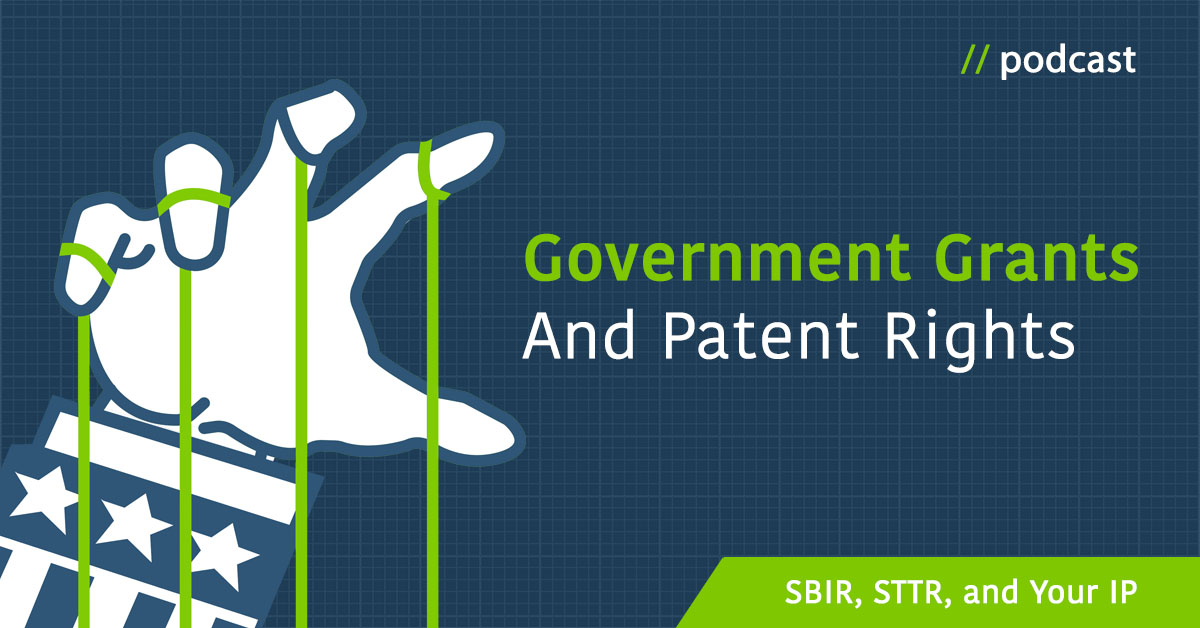|
By: Josh Sloat
SBIR, STTR, and Your IP
In this month's episode, we’re talking about the use of government grants and the strings that can come attached to your IP! We’re exploring the various types of small business research grants, how the Bayh-Dole Act regulates inventions generated under government grants, licensing and ownership implications for your patent when using federal dollars, and the sticky webs that you may find yourself in if you are not carefully tracking IP and adhering to the numerous provisions and timelines.
Largest Source of Early-stage Capital for Life Science Startups
The use of government grants for research and development is one of the most common areas of concern we get questions about from our clients. And for good reason! Non-diluting capital can be an essential source of funding when trying to get your innovation off the ground. Investor money comes with loss of equity and/or control. Family and friends’ money may come with the risk of strained relationships. So, essentially free money by way of government grants can seem like an obvious choice, right? And it is for many. The Small Business Technology Transfer (or STTR) and Small Business Innovation Research (or SBIR) grants are the largest source of early-stage capital for life science startups in the United States, combining to provide over $2B annually in support from federal agencies like the NIH.
With Strings Attached...
But like money from investors, friends, and family, these grants do still come with some serious strings attached and potential ramifications you need to be aware of. For instance, use of these funds grants the government a royalty-free license to practice your invention worldwide. To the surprise of many, and as we’ll discuss, this can include royalty-free use of patents obtained before even applying for the grant. This is potentially a big problem, especially if the federal government could be one of your primary customers. Other provisions can result in lost ownership rights if you fail to commercialize or neglect to file the correct paperwork on time. Most of these things are manageable, but when considering government grants, you need to be aware of these gotchas so you’re going in with clear eyes and can manage the hooks in a way that doesn’t jeopardize your patent rights.
That awareness is our focus today. Dr. Ashley Sloat, President and Director of Patent Strategy here at Aurora, leads the discussion along with our all-star patent panel, exploring:
Mossoff Minute: PREVAIL Act
In this month's Mossoff Minute, we discuss the introduction of a very important piece of patent reform legislation called the Promoting and Respecting Economically Vital American Innovation Leadership Act (PREVAIL). We’re also publishing excerpts as short-form videos on Instagram Reels, YouTube Shorts, and TikTok.
Availability
Patently Strategic is available on all major podcasting directories, including Apple Podcasts, Spotify, and Google Podcasts. We're also available on 12 other directories including Stitcher, iHeart Radio, and TuneIn, so you should be able to find us wherever you listen to podcasts.
Resources
Related Episodes
Transcripts We're also providing computer-generated transcripts for improved accessibility and additional reference opportunities. Slides For the visual learners out there, we also like to make our presenter slides available for your reference.
0 Comments
Leave a Reply. |
Ashley Sloat, Ph.D.Startups have a unique set of patent strategy needs - so let this blog be a resource to you as you embark on your patent strategy journey. Archives
July 2024
Categories |





 RSS Feed
RSS Feed